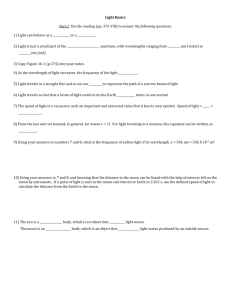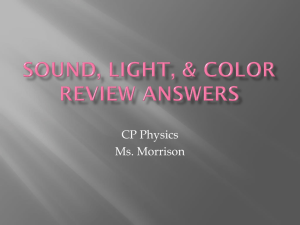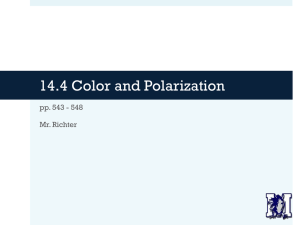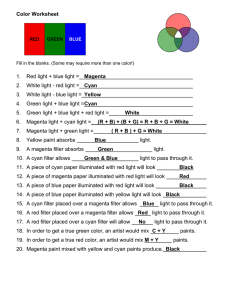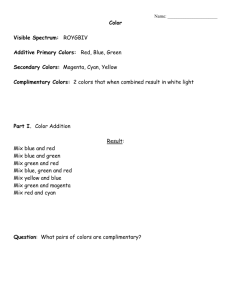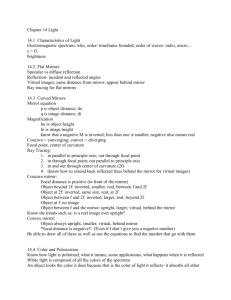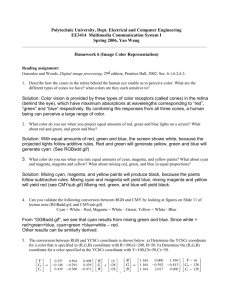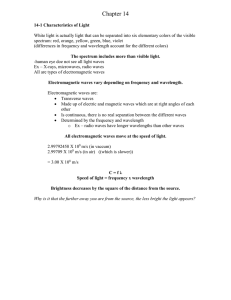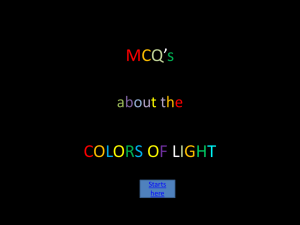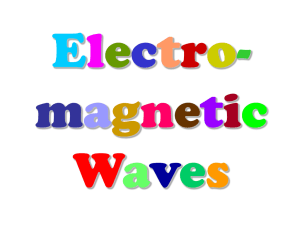Color
advertisement
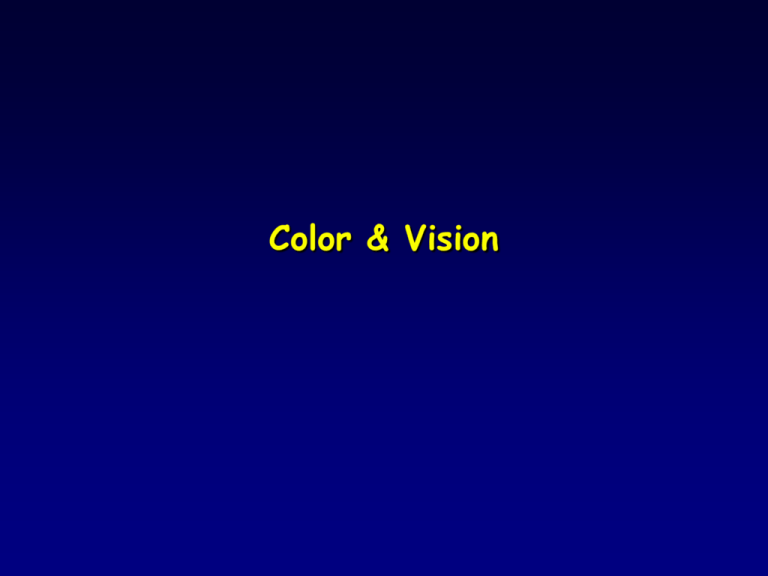
Color & Vision Parts of the Eye 3 types of cones in retina Each responds more strongly to wavelength for which it is named As the cones are stimulated in different proportions, our visual system constructs the colors we see. Color Links Color Mixing – Truscio Color Tutorial – Jewitt Physics Classroom – Color Colors of Light Song Physics 2000 Color Java Applets Ishihara Test for Color Blindness Primary Light Colors and Color Addition R+B=M R+G=Y G+B=C R+G+B=W Complementary Colors Any two colors of light which when mixed together in equal intensities produce white are said to be complementary colors of each other. Yellow + Blue = White Magenta + Green = White Cyan + Red = White Color Subtraction Color Subtraction Practice Red Red Black Magenta light shines on a sheet of paper containing a yellow pigment. Determine the appearance of the paper. Red Yellow light shines on a sheet of paper containing a blue pigment. Determine the appearance of the paper. Black Pigments Mixing Pigments Suppose an object is permeated by a mixture of two or more pigments and illuminated with white light. Complete the table. Pigment One Cyan Magenta Cyan Cyan, Magenta Pigment Two Magenta Yellow Yellow Yellow Colors Reflected Color Observed Mixing Pigments Suppose an object is permeated by a mixture of two or more pigments and illuminated with white light. Complete the table. Pigment One Cyan Magenta Cyan Cyan, Magenta Pigment Two Magenta Yellow Yellow Yellow Colors Reflected Blue Red Green None Color Observed Blue Red Green Black 4 Color Printing Color Shadows – 2 Lights Color Shadows – 3 Lights Ketchup Bottle Retinal Fatigue Flag The Rose Black dot Black Dots Elephant Legs Man & Woman Old Woman … Young Girl Vanity Two Faces … Or One? Face or Aleut Book Lines Rabbit Duck Spectral Distribution of Sun Scattering Scattering Why is the Sky Blue Blue Sky – Red Sunset http://www.stillmoving.ca/physics/faq/General/BlueSky /blue_sky.html Assorted Links Link Showing Absorption Graph Smithsonian Link
